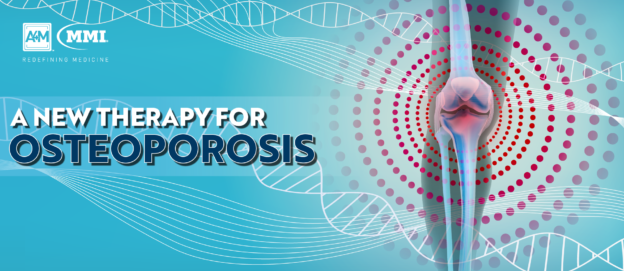Currently, an estimated 10 million people in the United States suffer from osteoporosis, with a disproportionate number of affected women. Caused by thyroid problems, aging, low body weight, hormonal dysfunctions, and other conventional risk factors, osteoporosis greatly increases the likelihood of fractures – especially in the spine, hip, and forearm. Fragility fractures are very common and dangerous; they not only increase morbidity and mortality rates, but they also greatly reduce mobility and quality of life.
Currently, several medications on the market are approved for the treatment of osteoporosis, including anti-resorptive and anabolic therapies. Researchers are continuously investigating more efficacious therapies to better prevent fractures as the positive public health implications are considerable. A growing body of research has contributed to the development of a new class of medication – sclerostin inhibitors – which are considered anabolic agents and have shown encouraging results in clinical trials to date.
Sclerostin Inhibitor – Romosozumab
Produced by osteocytes, the protein sclerostin helps regulate bone metabolism and inhibit bone formation – a key target for the treatment of osteoporosis. Romosozumab, sold under the brand name Evenity, is a new bone-forming sclerostin inhibitor recently approved by the FDA for the treatment of postmenopausal women at high risk for fracture.
The medication has a dual effect: romosozumab binds to sclerostin and thus increases bone formation while also inhibiting sclerostin production and thereby decreasing bone resorption. Current research implicates that the medication is more successful at lowering the risks of vertebral and clinical fractures in postmenopausal women.
Clinical Findings
In a randomized, controlled two-part trial of 7,000 postmenopausal women with osteoporosis based on low density measurements, romosozumab treatment significantly lowered the risk of new fractures than placebo. The study excluded patients with severe osteoporosis, recruiting a relatively low-risk cohort. During the first year of the trial, half of the participants received romosozumab, while the other half received an inactive medication for one year.
The study found that women taking romosozumab had notably fewer fractures – 16 total – than in the placebo group, which experienced 59 fractures over the course of the trial. During the second year of the investigation, all participants were given the anti-resorptive agent denosumab. Patients who had received romosozumab in the previous trial year and followed it with denosumab had a total of 21 fractures, compared with 84 fractures in the placebo group.
Another trial published in The New England Journal of Medicine enlisted 4,000 postmenopausal women with osteoporosis and a history of related fractures. Half of the participants were given romosozumab in the form of a monthly injection for one year, and alendronate one time per week for the second year. The remaining participants were treated with alendronate once a week for both years of the trial.
At the end of the investigation, researchers found that patients treated with romosozumab in the first year had fewer new spine fractures (127) versus those receiving alendronate for both years (243). Additionally, hip fractures decreased in incidence among those receiving romosozumab (41 vs. 66) and their bone density was elevated.
Indications and Side Effects
To date, romosozumab has been FDA-approved for the treatment of postmenopausal osteoporosis however, it may soon be cleared for other demographics and indications. Patients with a history of fractures due to osteoporosis, those with multiple risk factors for fractures, and those who have had no success with other therapies may be recommended romosozumab.
Treatment includes monthly injections of the medication and should be limited to one year as the bone-forming activity of romosozumab declines after 12 months. Patients undergoing this treatment should be advised to consume enough calcium and vitamin D to improve outcomes and assist bone formation activity.
Commonly reported side effects include joint pain and headaches although, very rarely people may experience osteonecrosis in the jaw and atypical thigh bone fractures. In addition, patients receiving romosozumab in their first year may face a slightly higher risk of heart attacks, stroke, and cardiovascular mortality than those given alendronate. Patients at risk for heart attack or stroke, or those with a history of either, should be prescribed a different osteoporosis medication.
Comprehensive and long-term data on the efficacy and safety of romosozumab is still lacking and caution should be maintained when prescribing the drug to at-risk patients. Further research is necessary to determine the risk-to-benefit ratio of romosozumab treatment, as the current clinical trials examining the new medication were funded by the drug manufacturer. However, the dual effect of increased bone formation and decreased bone resorption make it a promising future treatment modality for the millions of women affected by osteoporosis.

